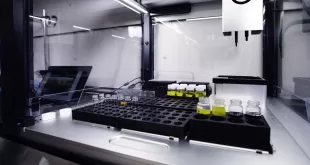By BioTalent Canada
A new program that aims to increase the job readiness of STEM and business students is bringing renewed attention, and a new solution, to a skills gap that employers have identified in new graduates.
The federally funded Student Work-Integrated Learning Program includes $6 million in wage subsidies over four years for 1,000 co-operative education placements in Canadian biotech companies, and further funding for curriculum enhancements for college and university biotechnology programs.
As a national non-profit HR association for the Canadian biotechnology industry, BioTalent Canada works to ensure that the bio-economy has access to the talent it needs, and is serving as the connector between government and the biotechnology industry to administer the program.
“Approximately 80 per cent of Canada’s bio-economy is comprised of companies with less than 50 employees, and so every hiring decision has an enormous impact,” says Rob Henderson, President and CEO of BioTalent Canada. As a result, he says, “cash-strapped companies are often reluctant to take a chance on a new hire that doesn’t meet all of their needs. Wage subsidy programs have played a key role in bridging this gap.”
“We’re a small, growing business and we don’t have the budget that bigger companies do,” says Keith Tucker, Senior Human Resources Director at Therapure Biopharma. “Wage subsidy programs have allowed us to hire new employees we wouldn’t otherwise have had the budget for.”
Alana Bolton, a Talent Generalist at STEMCELL Technologies, which uses its co-op program as its primary recruiting pipeline, says “we need students who are ready for the workplace, and we are prepared to follow through when the fit is right.”
“Our co-op students take on remarkable roles,” says Bolton. “When we have outstanding students, we want to hire them.”
The added challenge now is that new graduates, even ones with co-op experience, are missing key skills like project management and financial literacy that aren’t the traditional domain of academic programs, but employers increasingly expect students to have.
“Industry-led curricula enhancement is the holy grail to this problem,” says Henderson, “because wage subsidy programs alone won’t address the skills gap in a sustainable way.”
Under the program, industry and post-secondary institutions will come together to identify gaps in existing bio-economy curricula. BioTalent Canada will then use this as a roadmap and develop a series of related modules to better align curricula with industry needs. The curricula are available to post-secondary institutions at no cost.
BioTalent Canada hopes that post-secondary institutions, many of which have long embraced the co-op culture, will see this curricula enhancement as a natural extension of that philosophy.
“Curriculum creation is expensive,” says Henderson. “It doesn’t make sense to expect each institution to do that on their own when there’s a common set of essential elements that industry is looking for.”
By bridging that gap, BioTalent Canada hopes to see an across-the-board increase in the number of graduates who are job-ready, and a community of companies that are keen to hire them. So far, the program is getting a warm reception from industry.
 BioLab Business Magazine Together, we reach farther into the Canadian Science community
BioLab Business Magazine Together, we reach farther into the Canadian Science community





